We may earn a commission if you make a purchase through the links on our website.
The Best IPAM Software Management Tools for Tracking IP Addresses
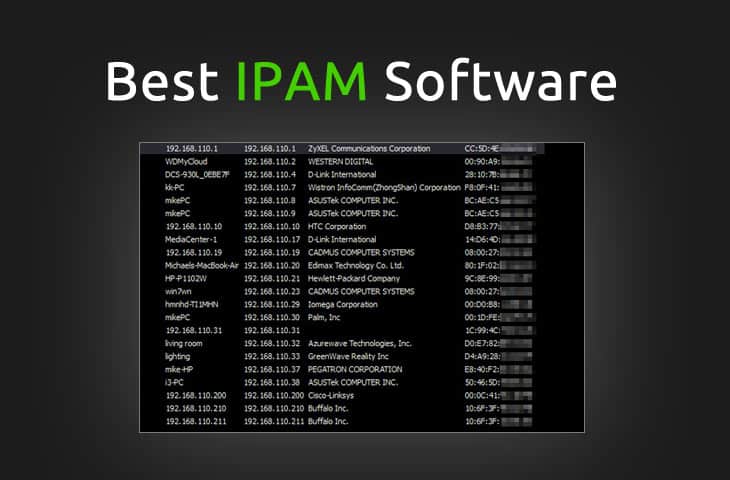
UPDATED: June 20, 2024
IPAM, which stands for IP Address Management software, is an essential set of tools for keeping track of all IP addresses within your LAN and Network.
We've seen all sorts of ways to track IP addresses within our time as IT professionals, from using Microsoft Excel spreadsheets and formulas to the windows specific DHCP manager for viewing IP address allocation. These methods are problematic when your network starts to grow and IP addresses change frequently.
Here is our list of the best IPAM tools:
- ManageEngine OpUtils – EDITOR'S CHOICE A combination of an IPAM and a switch port mapper that gives you full control over both IP addresses and MAC addresses on your system. Available for Windows Server and Linux. They offer a 30-day free trial.
- BlueCat IPAM Creates an overlay network uniting several sites and cloud resources through a DDI solution. Installs on top of a hypervisor.
- BT Diamond IP Unites the management of on-premises networks with cloud infrastructure, including AWS and Azure services. This is a managed service.
- Infoblox Trinzic IPAM services delivered as a network appliance. Integrates with DNS and DHCP server options.
- LightMesh IPAM A combined IPAM and access rights management solution that includes autodiscovery and network planning functions. This is a cloud-based service with a 30-day free trial.
- SolarWinds IP Address Manager A comprehensive package of IP address management services that will coordinate with your DHCP and DNS servers to create a full DDI solution.
- GestióIP A cloud-based IPAM service that can unite geographically distributed resources into one address space.
- Nokia VitalQIP A DDI solution that includes an IPAM service. Available as a network appliance or as a virtual appliance package over a hypervisor.
- Device42 A network management system that centers on a DDI solution. This is a cloud-based service that can manage on-premises, cloud-based, or hybrid systems.
- Men and Mice IPAM A cloud-based service that is part of a complete DDI solution with related DNS and DHCP systems.
What issues do IPAMs Solve?
Issues that usually come up when using a spreadsheet based tracking system include dormant or stale machines, DHCP IP addresses changes, static IP changes, IP overlaps and conflicts, BYOD (Bring your Own Device) issues and much more.
But these manual solutions don't really fit the bill when it comes to truly managing IP ranges within your company, which is why a proper IPAM software package is far better.
Especially with many companies and larger organizations now moving from IPv4 to IPv6, tracking IP addresses is crucial for the migration process, while also helping correctly estimating future needs and growth in the business.
The solution to these issues and more lies in a dedicated software package that has all the information, databases, alerts, tracking and management built into its feature set.
We'll review the Best IPAM software packages, both FREE and paid versions, and go over some of their main features and highlights.
We recommend any business with more than ten to fifteen users implement an IP tracking system at least, as it'll greatly reduce time spent tracking all the changes within the IT department, as well as provide integrated auto-mapping of IP Addresses, DHCP server management, DNS allocation, and more!
Related post: How to Scan Your Network for IP Addresses
Basics of IP Address Management
Before we get into the software review portion of this guide, lets discuss the basics of what IP address management software does and the main components.
The most important function of IPAM software is to monitor and manage DHCP, DNS and IP addresses – this is referred to as “DDI“.
There are many types of products available on the market that serve this purpose, ranging from cloud-hosted platforms to desktop software products to virtualized or physical hardware appliances that are meant to completely replace your existing DNS/DHCP infrastructure, while also providing enhanced tools and features above and beyond the virtual-only options.
Traditionally though, most IP address management systems will seamlessly integrate into your Windows (2003, 2008 and 2012 R2) environment while providing a single location or console for managing all things related to your DNS/DHCP and IP address setup.
Most IP management software will include features such as IP address auto-discovery, automated databasing of all devices on your network (laptops, desktops, VoIP nodes, wireless devices, etc.) all while eliminating issues like IP sprawl, stale IP address records within DNS/DHCP, IP Conflicts and so forth while also helping to minimize downtime.
The Best IP Address Tracking Software (IPAM)
What should you look for in IPAM systems?
We reviewed the market for IP address managers and analyzed the options based on the following criteria:
- A system that is able to coordinate with native DHCP servers
- A service that will update DNS servers to reconcile actual hostnames to newly allocated IP addresses
- An easy-to-use interface
- A service that is easy to set up
- A dashboard that will show MAC addresses alongside IP addresses
- A free trial, a demo system, or a money-back guarantee for a no-cost assessment
- Value for money, represented by a price that reflects the quality of the tools in the package
With these selection criteria in mind, we have identified some impressive IPAMs and we made sure to find systems that are delivered from the cloud as well as software packages for Windows and Linux.
Let's review the most popular IP Management software and hardware appliances on the market right now, along with some of the features they bring the table and the level of integration features they have for ease of use and scalability.
1. ManageEngine OpUtils – FREE TRIAL
ManageEngine OpUtils gives you the flexibility to manage all IP Addresses and Subnets in your network quickly and easily through 1 centralized dashboard!
Key Features:
- Auto Scanning of Networks and IP Addresses: Quickly and effortlessly manage all IP addresses and subnets through automated network scanning.
- IP Historical Records and Tracking: Keep track of historical IP records, providing valuable insights into network changes over time.
- Systems Details Sorted by IP Addresses: Access detailed information about systems, conveniently organized based on IP addresses.
- Discovery of New IP Devices on Your Network: Identify and integrate new IP devices seamlessly through the tool's autodiscovery feature.
- Alert & Notification Tools: Set up alerts and notifications for timely responses to network events and changes.
Why do we recommend it?
ManageEngine OpUtils earns our recommendation for its exceptional flexibility in swiftly and easily managing all IP addresses and subnets within your network. The centralized dashboard provides a user-friendly interface that streamlines the management process. The tool's suite of features, including auto-scanning of networks, IP historical records, and active directory integration, sets it apart. Our recommendation is backed by practical experiences, having tested the tool extensively to ensure its reliability and efficiency in addressing diverse IP address management needs.
This tool offers a variety of different options for managing your IP Address ranges quickly from a single location.
Setup Alerts, Notifications and view historical data on Servers, PC's and even Devices that connect to your networks!
Who is it recommended for?
Our recommendation for ManageEngine OpUtils is directed towards network administrators and IT professionals seeking a versatile solution for managing IP address ranges. With its centralized dashboard and user-friendly tools, it caters to individuals tasked with efficiently overseeing networks of varying sizes. The tool's alert and notification capabilities, coupled with the ability to view historical data on servers, PCs, and connected devices, make it ideal for those aiming to enhance network monitoring and management. Whether you are dealing with a small-scale network or a larger deployment, ManageEngine OpUtils proves to be a valuable asset in simplifying IP address management.
Pros:
- Comprehensive Suite of Tools: ManageEngine OpUtils offers a versatile suite of tools, including WoL, IP address management, and physical switch port mapping.
- Detailed Device Information: Gathers essential details like hostname, device status, MAC address, alongside IP address scans.
- Efficient Autodiscovery: Identifies new machines through autodiscovery, particularly beneficial for larger deployments.
- Cross-Platform Availability: Available for both Windows Server and Linux environments, enhancing its accessibility.
Cons:
- Learning Curve for Comprehensive Platform: ManageEngine is a robust monitoring platform with an extensive feature set, requiring time to fully explore and utilize effectively.
Download a 30-day free trial and get started immediately!
EDITOR'S CHOICE
ManageEngine OpUtils is our top pick for an IPAM management service for tracking IP addresses because this package deals with all levels of addressing on a network. The tool includes DNS and DHCP servers to provide you with a full DDI package, although you can use the native Windows DNS and DHCP if you prefer. This bundle also has a switch port mapper that looks at every physical interface on each of your network switches. You also get a port scanner to examine the TCP and UDP ports on your endpoints. This package provides many network management and troubleshooting services, suchas a MIB browser, a Wake-on-LAN tool, and Ping and Traceroute tools. The ManageEngine dashboard is expandable and if you buy several modules from the provider, they will all appear together in a single console. This is great for network manager because you can also get the OpManager service for network device status monitoring and the NetFlow Analyzer to examine traffic patterns.
Download: Start a 30-day FREE Trial
Official Site: https://www.manageengine.com/products/oputils/download.html
OS: Windows Server, Linux, and AWS
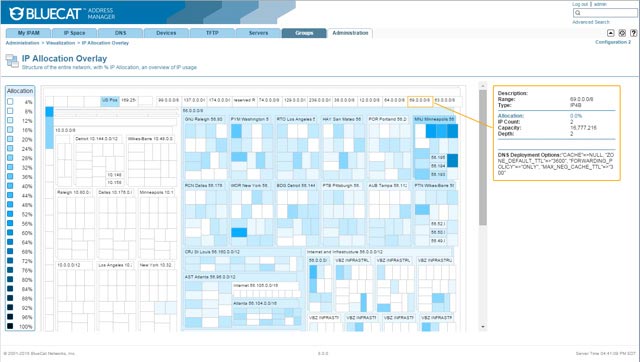
BlueCat's IPAM is strongly focused towards the enterprise level networks with a lot of systems running on it that also need the ability to frequently and easily adjust DNS/IP configurations without much fuss. It has a great amount of delegation ability in terms of permissions for segmenting your network to both share control while still maintaining it.
Key Features:
- Scalable Interface: BlueCat IPAM offers a scalable interface, ensuring adaptability to the dynamic needs of enterprise-level networks.
- Visual Representation of Config Deployments: Gain insights into configuration deployments through a visual representation, enhancing overall network management.
- Robust Access Control: The tool provides robust access control, allowing precise delegation of permissions and network segmentation.
Why do we recommend it?
BlueCat's IPAM stands out as an enterprise-focused solution, specifically tailored for networks with a multitude of systems that require frequent and effortless adjustments to DNS/IP configurations. Our recommendation is rooted in its strong emphasis on delegation abilities, allowing for the segmentation of networks to share control while retaining overall management. The tool's scalability, visual representation of configuration deployments, and robust access control contribute to its effectiveness in addressing the complex needs of enterprise-level networks. Through extensive testing, we have found BlueCat IPAM to be a reliable solution, particularly suited for enterprises requiring precise control over their network configurations.
It even allows you to share not just access to certain segments of network administration but to also lock off certain tools from that group, making sure that nobody has the ability to click a button they absolutely should never click. It also includes the usual gambit of basic information of all devices connected – IP address, DNS/DHCP data, DHCP lease, DNS host records, and even MAC addresses!
Who is it recommended for?
Our recommendation for BlueCat IPAM is aimed at enterprises with large, complex networks that demand dynamic DNS/IP configuration adjustments. Network administrators seeking a solution with advanced delegation capabilities will find BlueCat IPAM valuable. The tool's ability to share specific segments of network administration while restricting access to certain tools enhances security and control. While not ideal for smaller businesses, BlueCat IPAM excels in providing the necessary tools and scalability for larger network infrastructures.
Pros:
- Automatic Management of Expired IP Addresses: BlueCat IPAM can identify expired IP addresses from retired devices and manage them automatically.
- Support for DNS and DHCP Management: The tool supports both DNS and DHCP management, offering a comprehensive solution for network administrators.
- IPv4 and IPv6 Network Support: BlueCat IPAM seamlessly supports both IPv4 and IPv6 networks, catering to diverse network configurations.
Cons:
- No Free Trial: BlueCat IPAM does not offer a free trial, limiting the ability for users to explore its features before committing.
- Limited Public Pricing Information: Pricing information is not publicly available, making it challenging for potential users to assess the cost of the tool.
- Better Suited for Larger Networks: While ideal for larger networks, BlueCat IPAM may be less suitable for smaller businesses due to its scalability and advanced features.
Pricing includes an evaluation license, with standard licenses starting at approximately $14,000.
3. BT Diamond IP
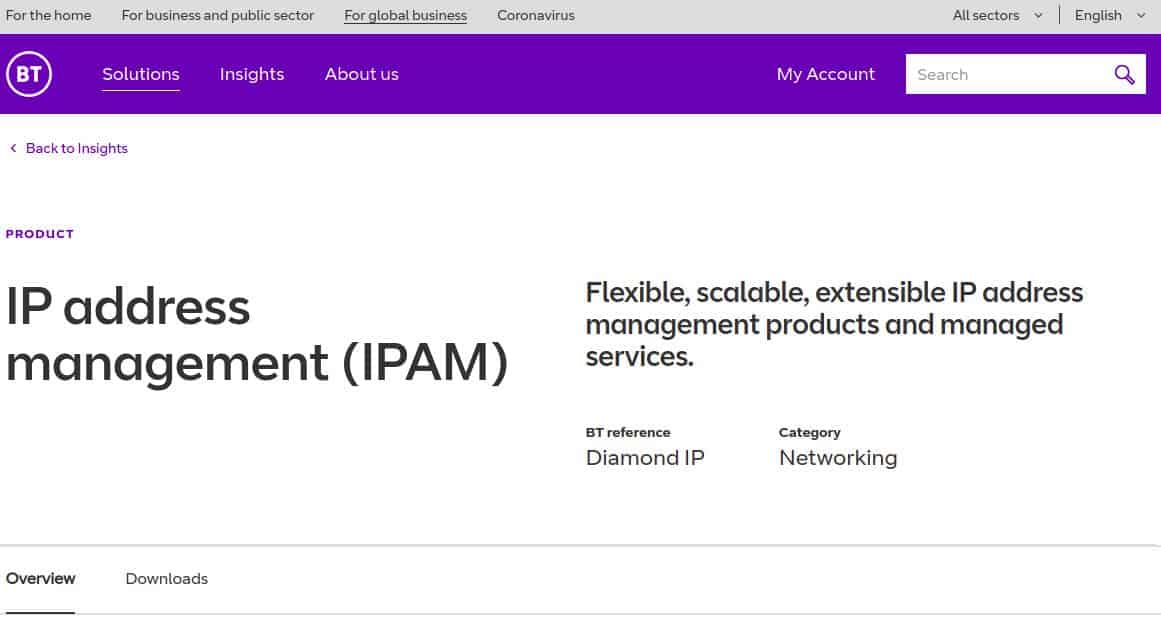
BT's Diamond IP is a robust software with a huge variety of options. Some network administrators may want to focus on the minimalist approach and get basic features – IP, DHCP, DNS, etc. tracking and management as you'd expect from any IPAM software – but GlobalServices offers a great deal more potentially with their BT Diamond IP software.
Key Features:
- Multi-Tenant Options: BT Diamond IP offers multi-tenant options, allowing administrators to configure and manage diverse network segments efficiently.
- Lease Expiration Alerts: Receive timely alerts for lease expirations, ensuring proactive management of IP resources.
- Support for Local and Cloud Environments: The tool supports both local and cloud environments, providing flexibility for network configurations and management.
Why do we recommend it?
BT Diamond IP by GlobalServices earns our recommendation for its robust software offering a plethora of options that cater to diverse network administration needs. While providing essential features like IP, DHCP, and DNS tracking, it goes above and beyond with additional functionalities. Our endorsement is based on the software's ability to accommodate a minimalist approach for those seeking basic features, as well as its potential for extensive capabilities, especially for those opting for staffed management and support services. The variety of options, coupled with the capacity for multi-tenant configurations, positions BT Diamond IP as a comprehensive solution for network administrators seeking flexibility and scalability.
They offer staffed management and support of your networks to take some of the load off your back, if you've got an environment large enough to justify the need and the cost!
Who is it recommended for?
Our recommendation is targeted at network administrators and organizations seeking a versatile IPAM solution. Whether opting for a minimalist approach or requiring advanced features, BT Diamond IP accommodates varying needs. The tool's multi-tenant options make it suitable for organizations with diverse network structures, and its support for both local and cloud environments enhances its adaptability. Additionally, organizations with large-scale environments justifying the need and cost for staffed management and support services will find BT Diamond IP to be an ideal choice.
Pros:
- Tool or Managed Service Options: BT Diamond IP is offered as both a standalone tool and as a managed service, catering to the preferences of resellers and companies looking to outsource IP management.
- Support for Multi-Cloud Environments: The tool supports multi-cloud environments, making it an ideal choice for larger networks with diverse cloud-based services.
- Ideal for Cloud-Reliant Organizations: BT Diamond IP is particularly well-suited for organizations heavily relying on cloud-based services for their network infrastructure.
Cons:
- Pricing Information via Sales Contact: Prospective users must contact sales to obtain pricing information, potentially causing delays in the evaluation process.
- Likely Higher Cost for Managed Service: Opting for the managed service is likely to incur higher costs compared to self-management, making it important to consider budgetary constraints.
BT's Diamond IP does not offer a free trial, must contact the BP IPAM team for price.
4. Infoblox Trinzic
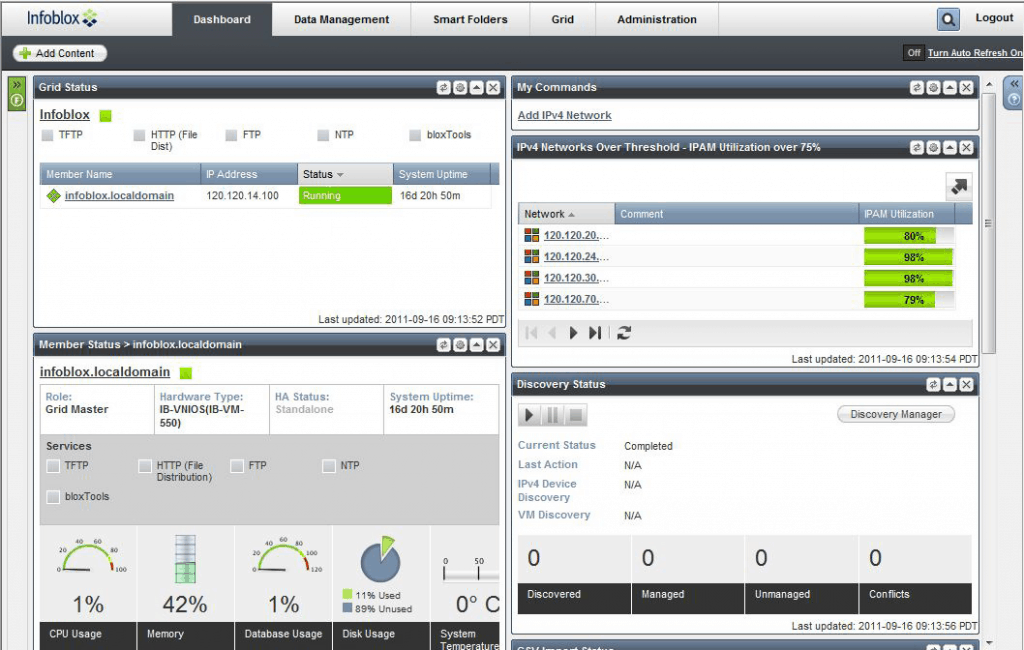
The Infoblox Trinzic is a physical piece of hardware with a great deal of built-in ability to help manage and aide your network's health.
Key Features:
- Simple Interface: Infoblox Trinzic offers a user-friendly and straightforward interface for efficient network management.
- Centralized Management of IP, DNS, and DHCP: The tool provides centralized management capabilities for essential components such as IP addressing, DNS, and DHCP.
- Native Graphical Reporting: Access detailed graphical reports natively, simplifying the analysis of network data without the need for additional tools.
Why do we recommend it?
Infoblox Trinzic stands out as a physical hardware solution with a robust set of built-in features dedicated to managing and enhancing your network's health. Our recommendation is based on its simple interface, providing centralized management of critical aspects such as IP, DNS, and DHCP. The native graphical reporting further adds to its appeal, offering a user-friendly way to access and analyze network data. Whether you prefer client-based software solutions or hardware devices, Infoblox Trinzic provides a powerful and flexible option for network administrators. The benefit of not needing software management between systems and the device maintaining its own logs contributes to its overall reliability.
Some approaches are purely client-based and performed via software, but there are just as many options which are based around powerful robust devices such as the Trinzic!
It fits into your network in much the same way as any router, switch, or other device would and, as you might imagine, the interface is accessed in precisely the same way.
The huge benefit here is that you don't need to manage software between systems or worry about having it installed on any particular system for managing your network, and the Trinzic will keep its own logs and other information handy itself!
The downside is that it does create another hardware-based point of failure and can be difficult to quickly manage if something goes catastrophically wrong.
With your management tools centralized you can easily assure things are running smoothly, or make adjustments on the fly, from anywhere.
Who is it recommended for?
Our recommendation for Infoblox Trinzic is directed at network administrators seeking a hardware-based solution for streamlined network management. This tool is ideal for those who value simplicity in interface design and centralized management of critical network components. With support for LDAP Active Directory integration and the ability to create customized workflows, it is particularly well-suited for Managed Service Providers (MSPs) looking to efficiently handle new client infrastructure. The generous 60-day trial period allows for thorough exploration and testing of its capabilities.
Pros:
- Automatic Identification of Unmanaged Devices: Infoblox Trinzic can automatically identify unmanaged devices, making it invaluable for MSPs cleaning up new client infrastructure.
- LDAP Active Directory Integration: The tool seamlessly integrates with LDAP Active Directory, enhancing its compatibility with existing network configurations.
- Customized Workflows: Administrators can create customized workflows, streamlining repeat administrative tasks for greater efficiency.
- Generous 60-Day Trial Period: Infoblox Trinzic offers a generous 60-day trial period, allowing users to thoroughly evaluate its features and suitability.
Cons:
- Less Intuitive Interface: The interface of Infoblox Trinzic is considered less intuitive compared to leading tools on the market, potentially requiring a learning curve.
- Reporting Considered an Add-On: Reporting is considered an add-on and is not included in the base product, potentially requiring additional investment for comprehensive reporting capabilities.
Pricing begins at $7,145 and increases based on selected options.
5. LightMesh IPAM
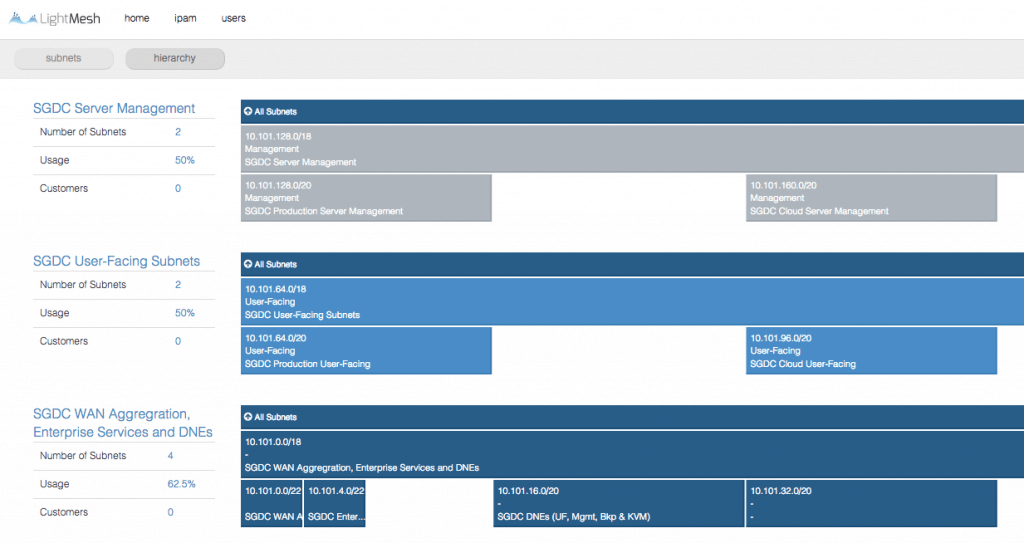
LightMesh's IPAM has many of the same features that are all but necessary in this kind of tool, as far as basic IP/DHCP/DNS discovery and tracking in all forms, as well as MAC address discovery and tracking. The strength of this particular piece of software comes in the form of its visual interface.
Key Features:
- Includes MAC Address Tracking: LightMesh IPAM encompasses MAC address tracking, providing a comprehensive view of connected devices on the network.
- Supports Various Audits and Reports Out-of-the-Box: The tool offers built-in support for various audits and reports, streamlining network monitoring and troubleshooting.
- Easy to Onboard and Use: LightMesh IPAM is designed for easy onboarding and usage, ensuring a smooth experience for network administrators.
Why do we recommend it?
LightMesh IPAM earns our recommendation for its comprehensive set of features, encompassing essential IP/DHCP/DNS discovery and tracking, as well as MAC address discovery and tracking. However, its strength lies in the visually intuitive interface, setting it apart from other tools. Our endorsement is rooted in the software's user-friendly design, making network management, DHCP reservation checks, and troubleshooting more accessible. The inclusion of MAC address tracking, support for various audits and reports out-of-the-box, and an easy onboarding process contribute to LightMesh IPAM's overall effectiveness in simplifying network administration.
Lightmesh's IPAM has a splendidly visually intuitive interface that makes it easier than with some other software to manage and peruse your network, whether checking on the availability and status of DHCP reservations or jumping through a line of connections to find out what isn't working and where.
Who is it recommended for?
Our recommendation for LightMesh IPAM is directed at network administrators and organizations seeking a visually intuitive solution for IP address management. The software's ease of use, support for team environments, and robust set of features make it ideal for larger enterprise networks or Managed Service Providers (MSPs) with complex network structures. Whether you are managing DHCP reservations, troubleshooting network issues, or simply perusing network data, LightMesh IPAM's visual interface provides a user-friendly experience.
Pros:
- Visual Graphing Feature: The software visually displays devices and subnet allocations neatly through a graphing feature, enhancing the overall user experience.
- Supports Team Environments: LightMesh IPAM is well-equipped for team environments, providing separate user accounts and permission sets for collaborative network management.
- Audit Trail for Accountability: Administrators can audit actions within the product, fostering accountability and simplifying troubleshooting processes.
- Suited for Larger Enterprise Networks or MSPs: The software is better suited for larger enterprise networks or MSPs with more extensive network structures, offering scalability and advanced features.
Cons:
- Limited Advantage for Smaller Networks: Smaller networks might not fully leverage the team features, making LightMesh IPAM more advantageous for larger-scale deployments.
LightMesh IPAM provides an online tour, with subscriptions available at $200 per month for two users and up to 10,000 IPs. You can try it out for free on a trial.
6. SolarWinds IP Address Manager
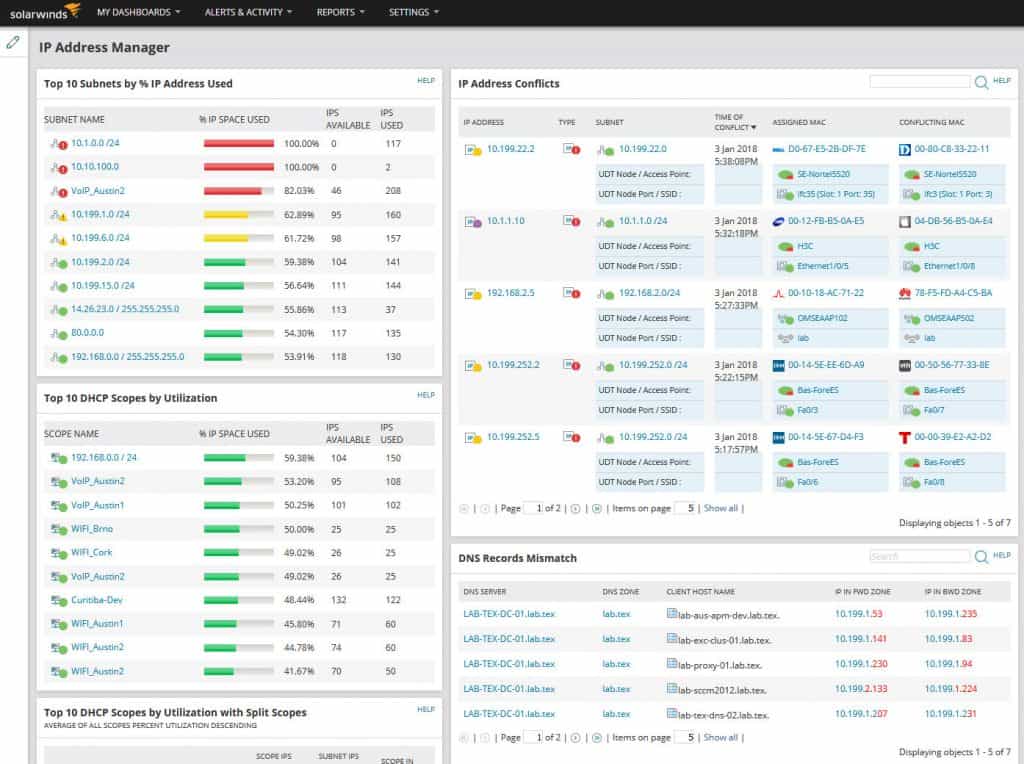
SolarWinds IP Address Manager does much of the above and then more! It covers all your basics – automatic IP management via subnet discovery (or Bulk Import Spreadsheets if needed) and IP scanning as well as easy DHCP/DNS management for forwarding and pointing traffic.
Key Features:
- Enterprise Multi-Tenant Options: SolarWinds IP Address Manager provides multi-tenant options, allowing easy delegation of permissions to admins for managing specific sections of the network.
- Support for IP, DHCP, and DNS Monitoring: The tool covers IP management, DHCP, and DNS monitoring, ensuring a holistic approach to network management.
- Bulk Management: SolarWinds IP Address Manager facilitates bulk management, streamlining tasks related to IP addressing and network administration.
- Integration with VMware vRealize Orchestrator: With version 4.6, the tool integrates seamlessly with VMware vRealize Orchestrator, enhancing workflow management and task automation for VM environments.
- Full Support for DHCP Failover: SolarWinds IP Address Manager offers comprehensive support for DHCP Failover, a significant advantage over configuring this feature within Windows Server.
Why do we recommend it?
SolarWinds IP Address Manager earns our wholehearted recommendation due to its comprehensive DDI package, making it an indispensable asset for both small and large networks. Its capacity to adeptly tackle common networking challenges, such as identifying and resolving IP conflicts, misconfigurations, and subnet capacity limitations, sets it apart. In our extensive testing, the tool has proven itself as a reliable solution, and our endorsement is founded on practical experiences. Beyond addressing network issues, its lightweight architecture ensures seamless operation on a straightforward Windows Server deployment, offering a robust yet accessible solution for IT professionals seeking in-depth networking capabilities.
Any basic management tool has to have these features, but the SolarWinds IP Address Manager goes a good deal further.
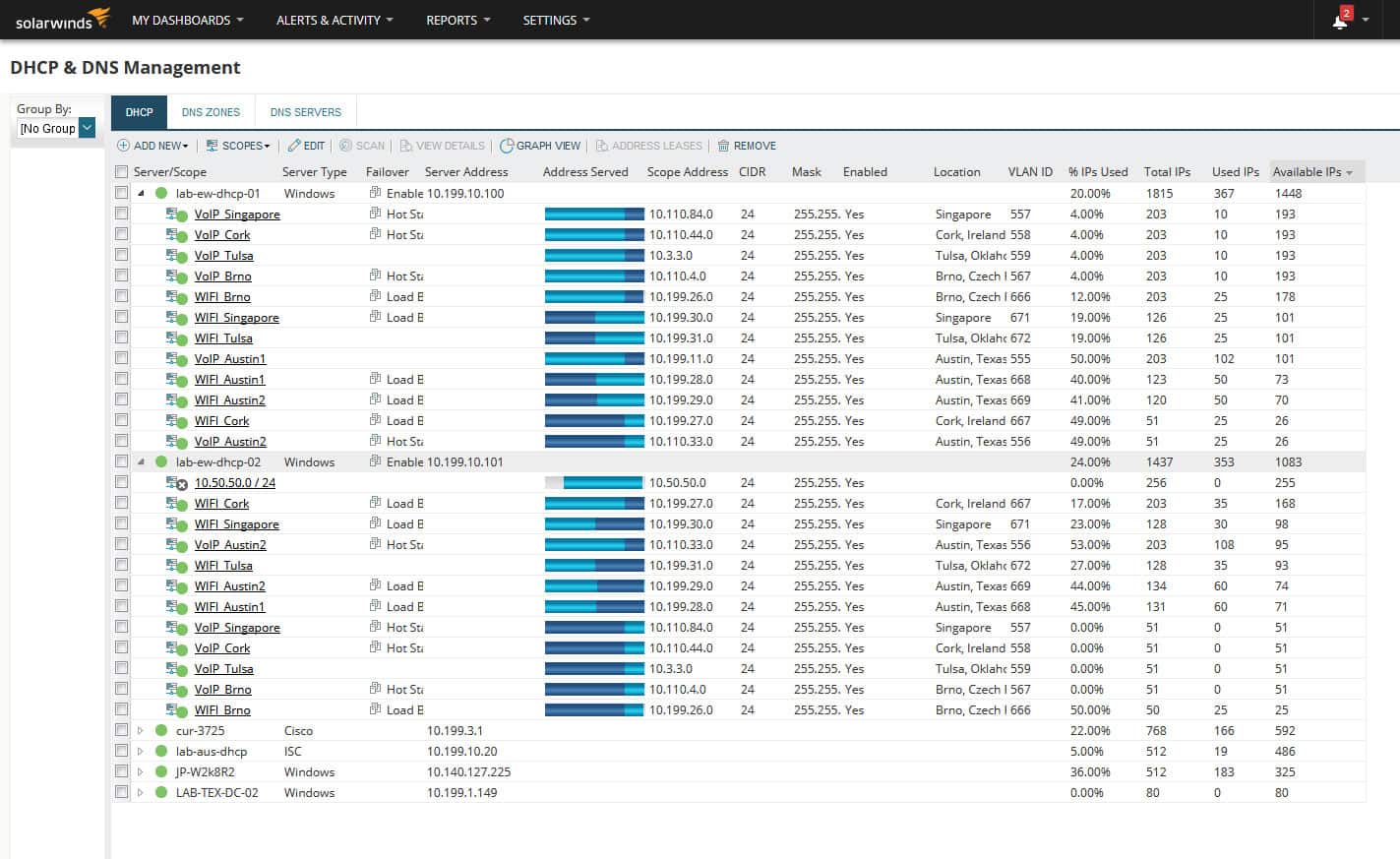
It includes the ability to easily delegate permissions to other admins can manage a smaller scale of the overall network, giving you the ability to delegate and share the responsibility without having to open your entire IP range to every admin.
It also automatically detects and alerts to IP conflicts or issues, takes note of DNS issues, and has an extensive history tracking all of this so that you have precious information logged for troubleshooting or explanation down the line.
With the most recent release of IP Address Manager v4.6, you now have the ability to integrate directly into VMware vRealize Orchestrator to manage you workflow and automate tasks for your VM environment.
This integration further allows you to run commands or scripts including Adding & Removing DNS A (host) Records for an IP Address, Create IP Address Reservations, Change IP Node Status and much more.
Compatibility includes:
- vCenter Server 6.5,
- vRealize Orchestrator 7.2
- vRealize Automation 7.2.
SolarWinds has also added full support for DHCP Failover that is part of Windows Server 2012 R2 & Windows Server 2016.
This allows you to configure Failover for multiple DCHP scopes within the IP Address Manager screen without having to leave the software.
This is a huge advantage over configuring this feature within Windows server where you can only configure 1 scope at a time.
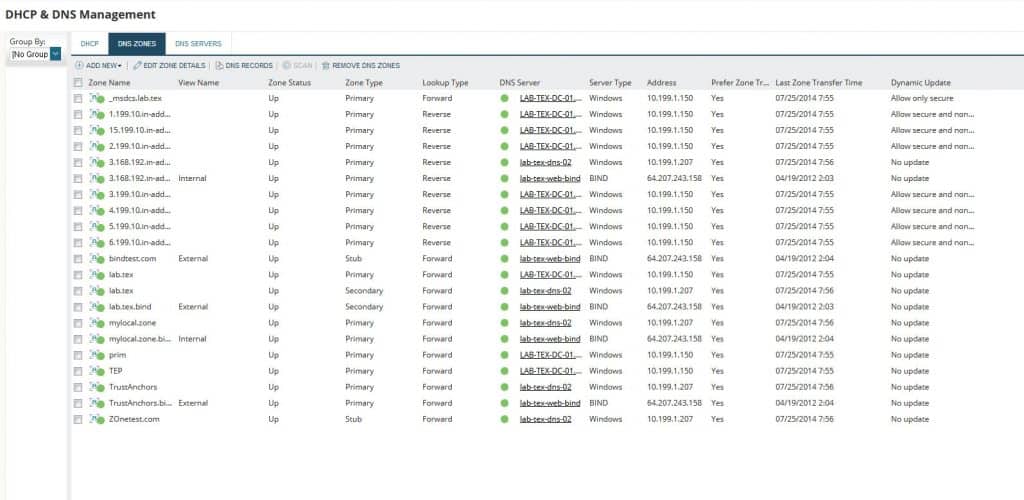
Scanning and polling multiple subnets will be even faster now with the option of Additional Polling Engine support has been added to the latest version.
When dealing with multiple subnets that are larger in size, adding another polling engine will decrease the scan/polling times significantly!
This allows you to keep your IPAM updated with the latest changes within your network and subnets quickly and more often.
Who is it recommended for?
Our recommendation for SolarWinds IP Address Manager is tailored to IT professionals tasked with managing networks of varying complexities. The tool's feature-rich repertoire, including advanced subnet allocation tools and customizable templated reports, positions it as an invaluable asset for optimizing address allocation and strategic network planning. Designed for professionals rather than home users, this tool caters to individuals who require a sophisticated networking solution capable of handling intricate tasks with precision and efficiency. The comprehensive suite of features makes it a go-to choice for those seeking a reliable, all-encompassing solution for network management.
Pros:
- Comprehensive DDI Package: SolarWinds IP Address Manager is a complete DDI package, suitable for both small and large networks.
- Efficient Tracking of Addressing Issues: The tool excels in tracking addressing issues such as IP conflicts, misconfigurations, and subnet capacity limitations.
- Lightweight and Simple Deployment: Its lightweight design ensures smooth operation on a basic Windows Server deployment.
Cons:
- Not Designed for Home Users: SolarWinds IP Address Manager is a sophisticated networking tool specifically crafted for IT professionals and not suitable for home users.
We highly recommend downloading and testing this in your network – their Latest features and integration with Windows Server as well as support for ISC DCHP for Red Hat Enterprise Linux (RHEL) version 7.x is another reason to give them a try.
7. GestióIP
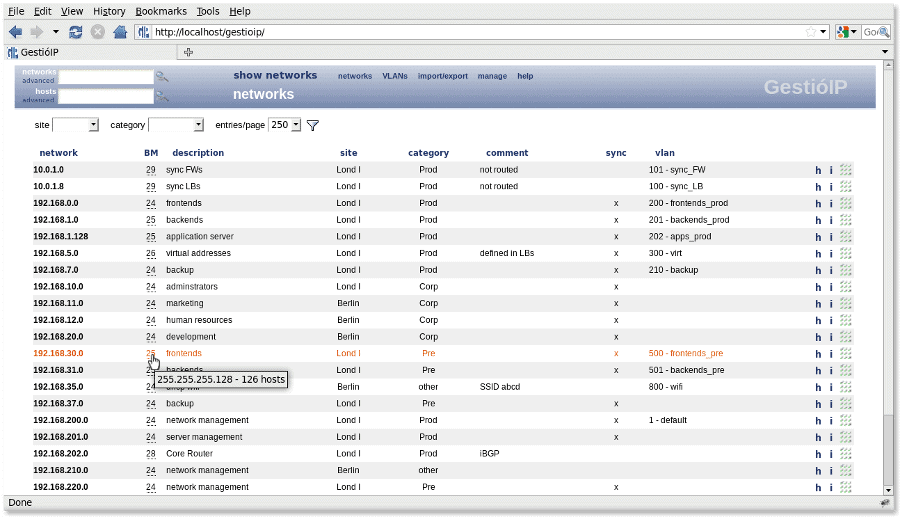
GestioIP is a relatively simple tool, but it also boasts an impressively ‘Free' price-tag, which makes it hard to argue against when you just need some reasonably basic level functionality!
Key Features:
- Easy to Use: GestióIP boasts a simple and user-friendly interface, ensuring ease of use for users with varying levels of expertise.
- Includes a Search Function: The tool includes a search function, allowing users to intuitively query and navigate through their network.
- Supports Larger Networks and VLANs: GestióIP is designed to support larger networks and VLANs, catering to the needs of users with extensive network configurations.
Why do we recommend it?
GestióIP earns our recommendation for its simplicity and impressive ‘Free' price-tag, making it an attractive choice for users seeking basic yet functional IPAM capabilities. The tool's ease of use, search function, and support for larger networks and VLANs contribute to its appeal. Our endorsement is grounded in GestióIP's powerful network discovery tools, facilitating easy tracking and mapping of networks. The web-based interface adds flexibility, allowing users to monitor and access crucial IPAM functions from any browser. Despite being a free tool, GestióIP offers valuable features for network management and VLAN control.
It has powerful network discovery tools and functions for easy tracking and mapping of your network, and even has a Search-Engine based expression system for making intuitive queries about your network!
On top of it all GestioIP is web-based which gives you a great deal of freedom in utilization and accessing your crucial IPAM software, and even has some features for managing VLANs!
Who is it recommended for?
Our recommendation for GestióIP is directed at users who prioritize simplicity and cost-effectiveness in an IPAM solution. It is an ideal choice for those with basic functionality needs and larger networks or VLANs to manage. The web-based interface adds convenience, making it suitable for users who require easy monitoring and accessibility from any browser. While it may have limited features compared to paid IPAM tools, GestióIP is a valuable option for users who prioritize a free solution without compromising essential IPAM capabilities.
Pros:
- Web-Based Interface: The web-based interface provides flexibility, enabling easy monitoring and access to IPAM functions from any browser.
- Network Auditing: GestióIP offers auditing capabilities across the network, providing visibility into network changes for enhanced management.
- Free IPAM Tool: The tool comes with an impressive ‘Free' price-tag, making it a cost-effective solution for users with basic IPAM requirements.
Cons:
- Limited Features Compared to Paid Tools: GestióIP may have limited features compared to paid IPAM tools, making it more suitable for users with basic functionality needs.
- Interface Navigation Challenges: The interface may not be the easiest to navigate, potentially requiring users to spend some time getting accustomed to the tool's layout.
GestioIP is free.
8. Nokia VitalQIP
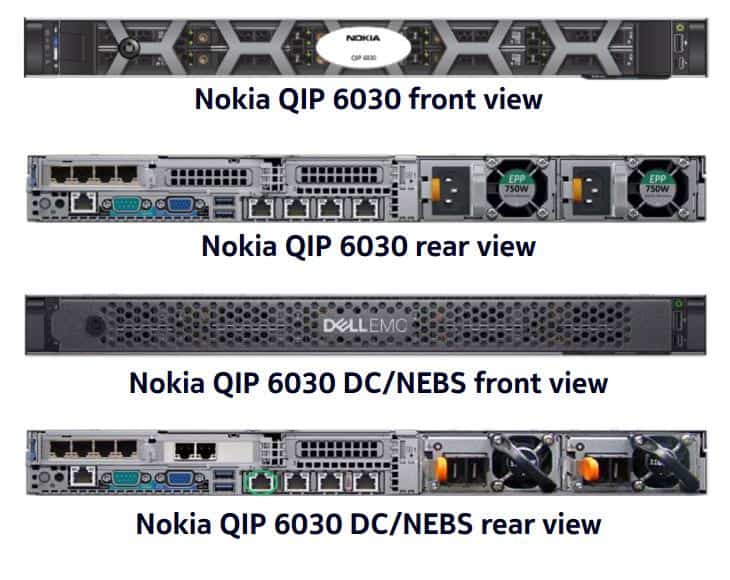
Nokia VitalQIP takes the complexity out off operating an IPAM, offering both physical and virtual there's almost no environment that couldn't benefit from their systems and almost no combination of features or capabilities that one could be found wanting for.
Key Features:
- Multi-Tenant Support: Nokia VitalQIP includes multi-tenant support, making it an ideal choice for ISPs or MSPs managing diverse network spaces.
- Includes a Physical Server: The tool provides the option of a physical server, offering flexibility in deployment for various network configurations.
- Extensive API and Documentation: Nokia VitalQIP boasts an extensive API with comprehensive documentation, facilitating seamless integration and customization.
Why do we recommend it?
Nokia VitalQIP earns our recommendation for its ability to simplify the complexity of operating an IP Address Management (IPAM) system. With both physical and virtual options, it caters to a wide range of environments, offering a comprehensive set of features and capabilities. Our endorsement is based on the tool's versatility, supporting various platforms and vendors, and its scalability from small virtual-only solutions to extensive data centers with a mix of physical and virtual components. The inclusion of multi-tenant support, a physical server option, and an extensive API with comprehensive documentation further solidify Nokia VitalQIP as a robust IPAM solution.
Both support a wide range of platforms and vendors, and scale immensely from small virtual-only solutions for appropriate environments all the way up to multiple network spaces to data centers with a mix of physical and virtual!
Who is it recommended for?
Our recommendation for Nokia VitalQIP is directed at enterprises seeking a comprehensive DDI/IPAM service within a single tool. The tool's support for multiple integrations into popular monitoring services, a robust API, and multi-tenant capabilities make it particularly suitable for Internet Service Providers (ISPs) or Managed Service Providers (MSPs). While it may not be the best option for small businesses due to its enterprise focus, Nokia VitalQIP excels in providing a reliable and scalable solution for complex network environments.
Pros:
- DDI/IPAM Service in a Single Tool: Nokia VitalQIP combines Domain Name System (DNS), Dynamic Host Configuration Protocol (DHCP), and IP Address Management (IPAM) services in a single, comprehensive tool.
- Supports Multiple Integrations: The tool supports multiple integrations into popular monitoring services, enhancing its compatibility with existing network management setups.
- Robust API and Library of Plugins: Nokia VitalQIP offers a robust API, empowering users with the flexibility to customize and extend functionalities using a library of additional plugins.
- Multi-Tenant Support for ISPs or MSPs: Multi-tenant support makes it an excellent choice for Internet Service Providers (ISPs) or Managed Service Providers (MSPs) managing diverse network environments.
Cons:
- Pricing Not Publicly Available: Prospective users must contact sales for pricing information, potentially causing delays in the evaluation process.
- Enterprise Focus, Not Ideal for Small Businesses: Designed for enterprises, Nokia VitalQIP may not be the optimal choice for small businesses with less complex network requirements.
Nokia VitalQIP does not offer a free trial; must contact sales to learn how to buy and get a for quote.
9. Device42
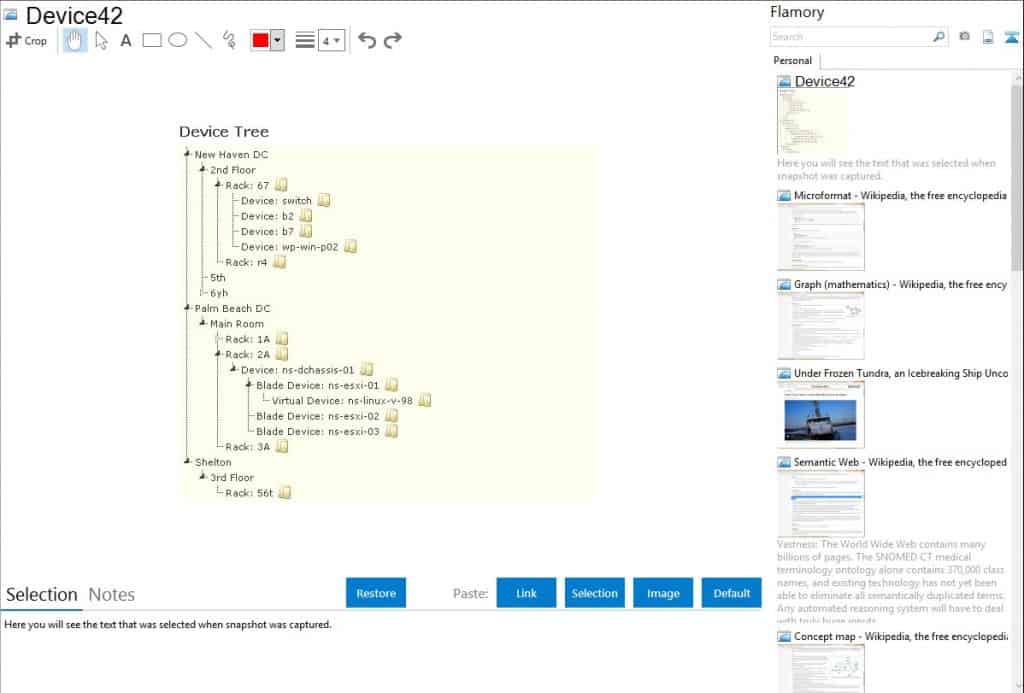
Device42 takes a slightly more specific approach with IPAM by gearing slightly toward data center management. It has automated visual discovery and organization on server racks, and can make your life a whole lot easier if that's what you're managing!
Key Features:
- Supports QR Code Tracking and Generation: Device42 supports QR code tracking and generation, streamlining the process of managing and adjusting hardware configurations.
- Highly Visual Platform: The tool provides a highly visual platform, making it invaluable for data center management and efficient IPAM.
- Easily Scales with Your Network: Device42 is designed to easily scale with your network, accommodating the dynamic needs of data center environments.
Why do we recommend it?
Device42 earns our recommendation for its specialized approach to IP Address Management (IPAM), particularly geared toward data center management. The tool stands out for its automated visual discovery and organization on server racks, offering a unique and highly visual platform. Our endorsement is based on Device42's ability to make data center management more efficient, with features such as QR code tracking and generation. The tool easily scales with your network, providing invaluable assistance in handling racks, topography visualization, and seamless adjustments to hardware configurations.
Device42's visual display is positively invaluable when you're handling a series of racks and even manages topography on the application level across several racks! It even has a built-in QR code generation and management system so as to make it even easier to move and adjust hardware without having to remember to make those same adjustments in your IPAM software manually.
Who is it recommended for?
Our recommendation for Device42 is directed at users and organizations specifically focused on data center management. The tool is ideal for those handling server racks and seeking a highly visual platform for IPAM. Device42's ability to produce automatic topology maps, dependency mapping, and unique rack-level visualization makes it particularly suitable for on-site technicians managing physical infrastructure. While initial configuration may be complex, Device42 is designed to scale effectively in enterprise environments.
Pros:
- Automatic Topology Maps and Dependency Mapping: Device42 can produce automatic topology maps and dependency mapping, enhancing network visualization and management.
- Rack-Level Visualization: The tool offers a unique rack-level visualization, assisting on-site technicians in mapping physical infrastructure to specific services.
- Designed to Scale in Enterprise Environments: Device42 is specifically designed to scale effectively in enterprise environments, catering to the requirements of complex data center setups.
Cons:
- Complex Initial Configuration: The initial configuration of Device42 may be complex and time-consuming, requiring users to invest time in the setup process.
- Creation of Custom Affinity Groups: Users may find it challenging to create custom affinity groups, and an improvement in this area would enhance customization options.
Device42 provides a free trial, with pricing starting at $1,499 for up to 1,000 IPs.
10. Men and Mice IPAM
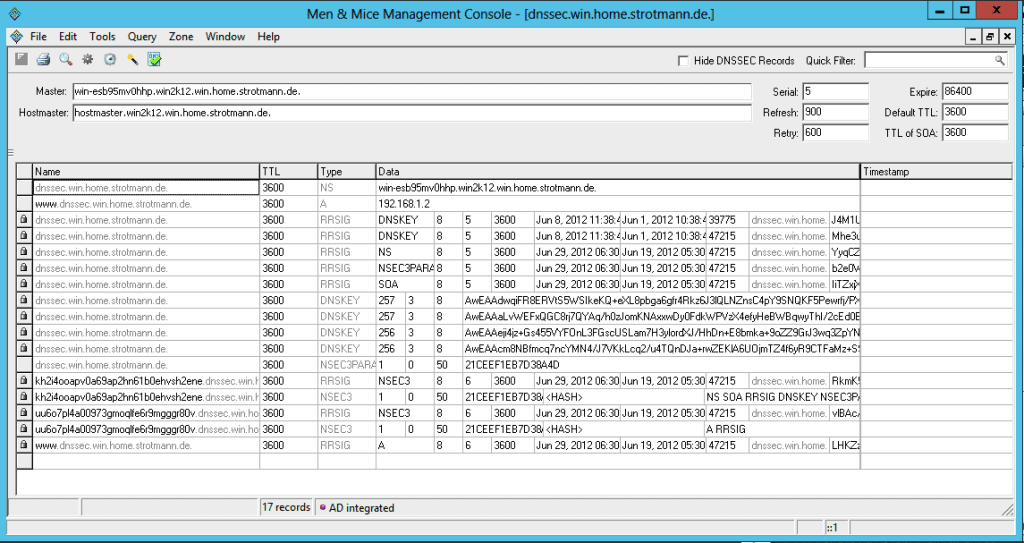
Men and Mice's IPAM stands out in one particular way – some IPAM software falters when it comes to Active Directory discovery and management, but this software does not!
Key Features:
- Lightweight Installation: Men and Mice IPAM offers a lightweight installation, ensuring efficient performance with minimal resource requirements.
- Extensive API: The tool boasts an extensive API, providing users with powerful capabilities for making precise calls and automating tasks.
- Supports Scripting: Men and Mice IPAM supports scripting, offering an additional layer of automation for various common tasks in network management.
Why do we recommend it?
Men and Mice IPAM stands out for its exceptional capability in Active Directory (AD) discovery and management, setting it apart from other IPAM software options. The tool's lightweight installation, extensive API, and scripting support make it particularly powerful in environments heavily reliant on AD. Our recommendation is based on the software's capacity to provide centralized control over networks through robust DNS and DHCP monitoring and management. The extensive built-in scripting ability further enhances automation for various common tasks, contributing to simplified and solidified network management.
It's therefore exceptional in environments heavy on AD use where the powerful API will give you far more ability to make the right calls and automation to simplify and solidify management of the network. It even has an extensive built in scripting ability to further aid in automation of various common tasks!
Who is it recommended for?
Our recommendation for Men and Mice IPAM is directed at users and organizations with a significant reliance on Active Directory. It is an ideal choice for those seeking robust DNS and DHCP monitoring and management capabilities. The powerful API makes it suitable for environments where precise calls and automation are essential. Additionally, the tool is a viable management solution for Managed Service Providers (MSPs) and excels in tracking addressing issues in cloud and hybrid environments. The browser-based dashboard enhances accessibility, making Men and Mice IPAM more user-friendly compared to some comparable tools.
Pros:
- DNS and DHCP Monitoring and Management: The tool provides comprehensive DNS and DHCP monitoring and management capabilities, offering centralized control over networks.
- Viable Management Solution for MSPs: Men and Mice IPAM is a viable management solution for Managed Service Providers (MSPs), catering to diverse network requirements.
- Tracking Addressing Issues in Cloud and Hybrid Environments: The software excels in tracking addressing issues in cloud and hybrid environments, enhancing its adaptability to modern network configurations.
- Browser-Based Dashboard: The browser-based dashboard enhances accessibility, making the product more user-friendly compared to similar tools.
Cons:
- Interface and Visualizations: The interface could be made more user-friendly, and additional visualizations would improve the overall user experience.
- Integrations into Some Cloud Providers: Integrations into some cloud providers can be time-consuming, potentially requiring additional effort in certain environments.
Get a free trial; must contact sales for quote.
11. TCPWave
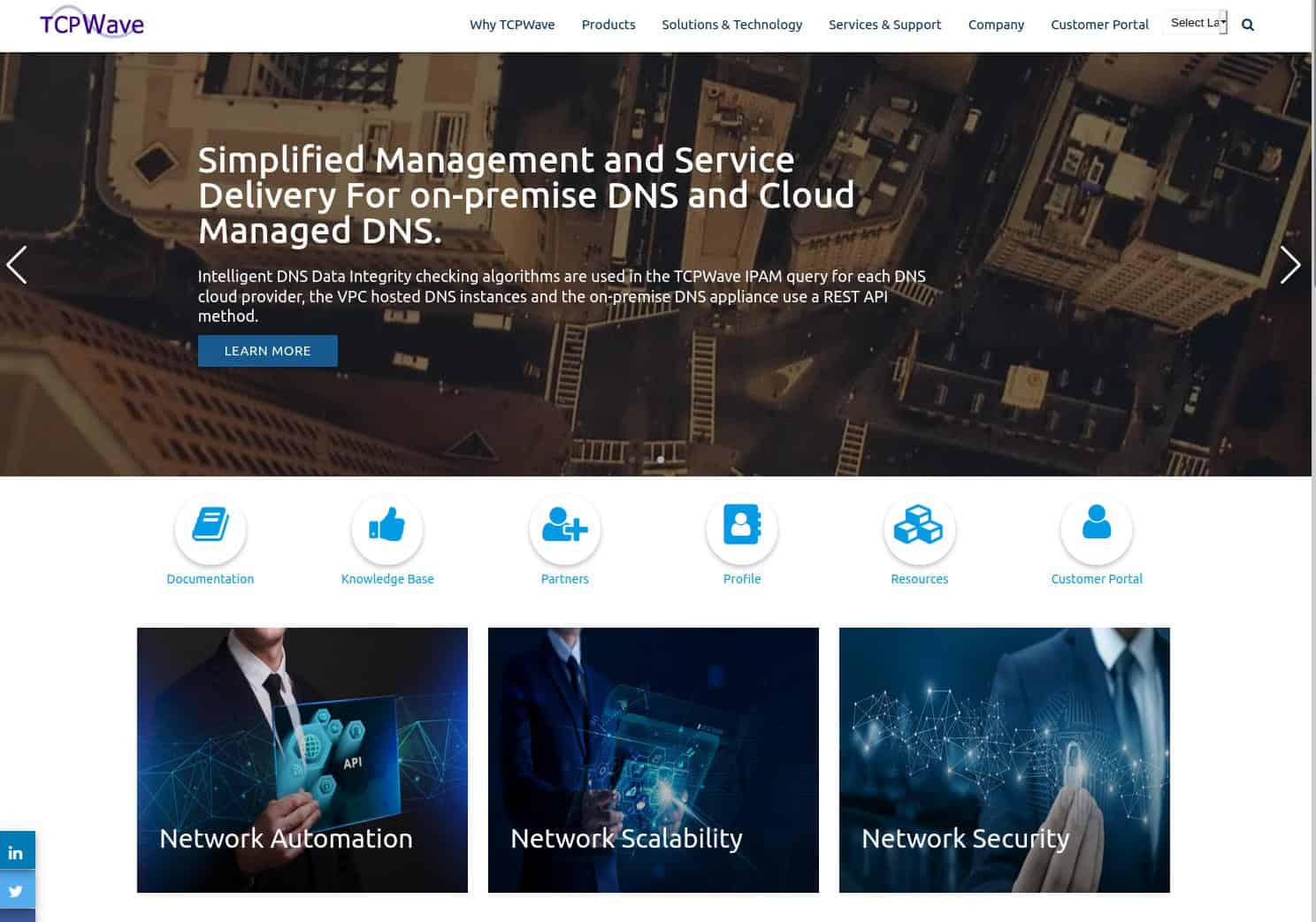
TCPWave takes a somewhat unique non-BIND approach to IPAM and makes a bold claim of near-infinite scalability. Whereas some IPAM solutions will falter as a business grows and grows and as data center becomes the plural data centers, TCPWave will stay steady and reliable and grow just as easily.
Key Features:
- Enterprise-Level Scalability: TCPWave is designed with enterprise-level scalability, providing a reliable solution for businesses with growing and evolving network requirements.
- API, GUI, and CLI Interface Options: The tool offers a versatile range of interface options, including API, GUI, and CLI, catering to diverse user preferences and requirements.
- Supports Data Centers: TCPWave is equipped to support data centers, making it suitable for organizations with complex network infrastructures.
Why do we recommend it?
TCPWave earns our recommendation for its unique non-BIND approach to IP Address Management (IPAM) and its bold claim of near-infinite scalability. While some IPAM solutions may face challenges as businesses and data centers grow, TCPWave stands out for its steadfast reliability and ease of scalability. The tool's emphasis on enterprise-level scalability, along with its versatile API, GUI, and CLI interface options, makes it a robust choice for organizations with evolving network needs. TCPWave's ability to support data centers adds to its appeal, making it a reliable and adaptable solution for various network environments.
Right along with immense scalability TCPWave emphasizes the need for security as well, and comes with a host of API functionality, CLI framework, and even more.
Who is it recommended for?
Our recommendation for TCPWave is directed at businesses and organizations anticipating significant growth and scalability requirements. The non-BIND approach and near-infinite scalability make it an ideal choice for those with expanding networks and multiple data centers. The availability of API functionality, CLI framework, and emphasis on security features make TCPWave suitable for a wide range of network management scenarios.
Pros:
- Near-Infinite Scalability: TCPWave boasts near-infinite scalability, ensuring reliability and ease of growth as businesses and data centers expand.
- Versatile Interface Options: The availability of API, GUI, and CLI interface options provides flexibility and accommodates various user preferences in network management.
- Security Emphasis: TCPWave places emphasis on security features, ensuring a secure and protected environment for network operations.
Cons:
- Specific Implementation Approach: The non-BIND approach may require users to adapt to a specific implementation methodology, which could be different from traditional BIND-based approaches.
TCPWave does not provide a free trial but offers a demo upon sign-up. Contact sales for a pricing quote.
Open Source IPAM Notable Mentions
IP Plan
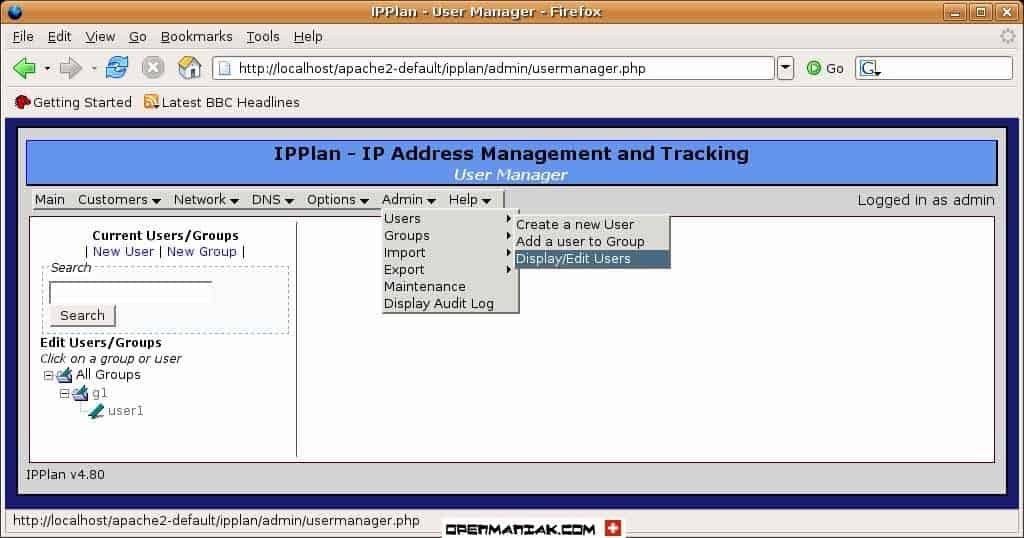
IP Plan is a fairly cut and dry bare-bones IPAM that has a strong focus towards the *NIX environments, from Linux/Unix to Fedora and all the way to Debian, Mandrake, and beyond.
Key Features:
- Simple Interface: IP Plan offers a simple and user-friendly interface, facilitating easy navigation and efficient IPAM operations.
- Lightweight Installation: The tool comes with a lightweight installation process, minimizing resource requirements for optimal performance.
- Supports Simple Audits: IP Plan supports simple audits, providing basic tracking and monitoring functionalities for IP address management.
Why do we recommend it?
IP Plan is recommended for its straightforward and bare-bones approach to IP Address Management (IPAM), with a strong focus on *NIX environments, including Linux/Unix, Fedora, Debian, Mandrake, and similar systems. Despite not receiving recent updates, the open-source nature of this software, coupled with its simplicity, lightweight installation, and support for simple audits, makes it a reliable choice for specific environments. The tool excels in managing smaller *NIX-based or *NIX-heavy environments, providing the essential functionalities without unnecessary complexity.
Although it hasn't been updated in some time, and may not be anymore, that isn't always a bad sign, especially for an open-source piece of software. It does what it needs to do and does it will! While limited by the operating environment, its an excellent choice for managing somewhat smaller *NIX based or *NIX heavy environments!
Who is it recommended for?
Our recommendation for IP Plan is directed at users and organizations operating in *NIX environments, seeking a straightforward and efficient IPAM solution. It is an excellent choice for managing smaller *NIX-based or *NIX-heavy environments where the simplicity and reliability of the tool align with specific operational needs. While it may not have the latest updates, the open-source nature of IP Plan can be advantageous, especially for users who prioritize stability over frequent feature updates.
Pros:
- Focused NIX Environment Support: IP Plan has a strong focus on *NIX environments, making it well-suited for Linux/Unix, Fedora, Debian, Mandrake, and similar systems.
- Stable Open-Source Solution: The open-source nature of IP Plan, combined with its stability, makes it a reliable choice for users who prioritize a proven and straightforward solution.
Cons:
- Lack of Recent Updates: IP Plan may not have received recent updates; however, for some users, especially those valuing stability, this might not necessarily be a disadvantage.
- Limited Operating Environment Compatibility: The tool's functionality is limited to *NIX environments, which may restrict its applicability for users operating in different operating system environments.
IP Plan is free.
NiPaP – Neat Address Planner
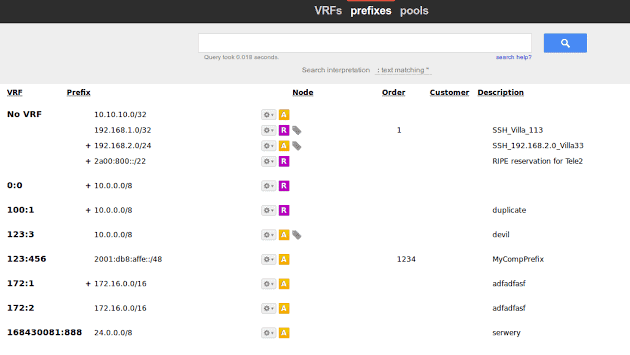
NiPaP is a quirky free-ware open-source option that makes a rather bold claim – “NIPAP is the best open source IPAM in the known universe”. Whether or not that's entirely accurate, it does spark some rather interesting thoughts by taking unusual approaches to traditional IPAM management.
Key Features:
- Lightweight Interface: NiPaP provides a lightweight interface, ensuring an efficient user experience without unnecessary complexity.
- Supports Both Web Interface and CLI: The software supports both a web interface and Command-Line Interface (CLI), offering versatility in usage and accommodating different user preferences.
- Open Source: NiPaP is open-source, allowing users to access, modify, and customize the software according to their requirements.
Why do we recommend it?
NiPaP – Neat Address Planner earns our recommendation for being a quirky, free-ware open-source IP Address Management (IPAM) option that takes unique and bold approaches to traditional IPAM management. While the claim of being the “best open source IPAM in the known universe” is subjective, the software stands out for its innovative features and commitment to providing both a lightweight interface and robust functionality. Our recommendation is based on NiPaP's unconventional yet effective approach to IP address management, combining a web interface and Command-Line Interface (CLI) options for versatility.
The software is written in Python and handles all the standard basic network management, but also boasts robust search ability, extreme speed in automation, exceptionally deep documentation, integrated statistics, and has both a web-interface and CLI option.
It's a software for network engineers built by network engineers and was originally custom built to handle a certain service provider in Europe!
Who is it recommended for?
Our recommendation for NiPaP is directed at users and organizations seeking a distinctive and open-source IPAM solution. NiPaP is an excellent choice for those who value innovation, as it takes unusual approaches to traditional IPAM management. The software, being lightweight and supporting both a web interface and CLI, is suitable for a wide range of users, from beginners to advanced network administrators. NiPaP's use of Python, robust search ability, extreme speed in automation, deep documentation, and integrated statistics make it a versatile option for various IPAM needs.
Pros:
- Innovative Approach to IPAM: NiPaP takes unique and bold approaches to traditional IPAM management, offering innovative features and functionality.
- Python-Based: The software is written in Python, providing a reliable and widely used programming language for network management.
- Robust Search Ability: NiPaP boasts a robust search ability, enhancing the efficiency of IP address management tasks.
- Extreme Speed in Automation: The software excels in automation, providing extreme speed in performing tasks related to IP address management.
- Integrated Statistics: NiPaP features integrated statistics, offering insights and analytics for better network management.
Cons:
- Subjective Claim: The claim of being the “best open source IPAM in the known universe” is subjective and may vary based on individual preferences and requirements.
- Learning Curve for Unconventional Approaches: Users accustomed to traditional IPAM approaches may experience a learning curve in adapting to NiPaP's unconventional methods.
NiPaP is free.
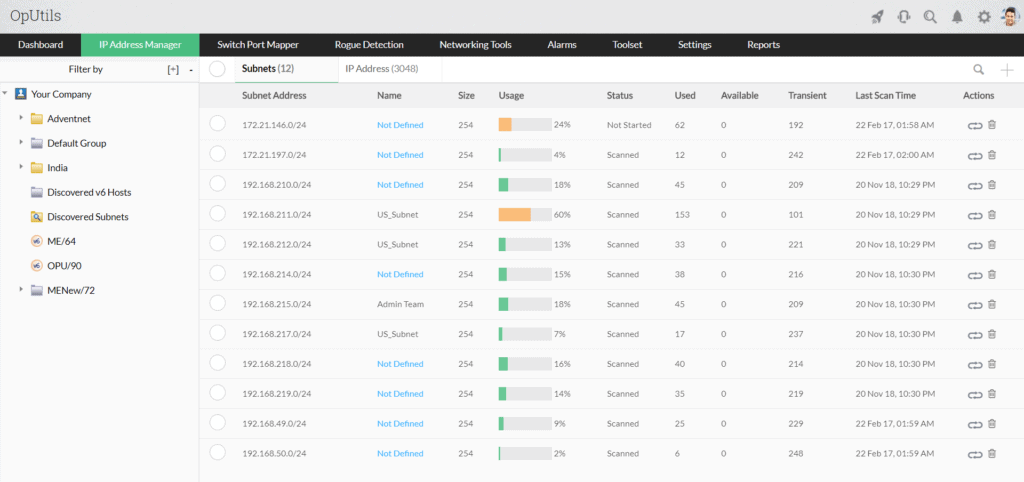
2. BlueCat IPAM